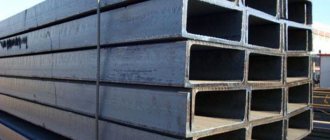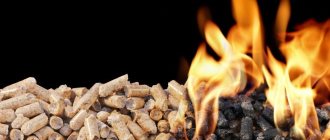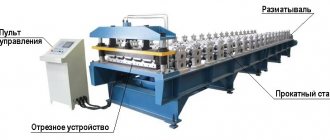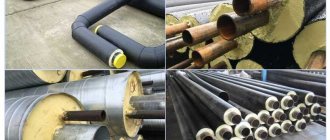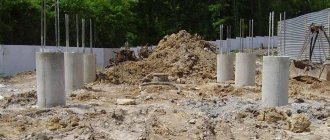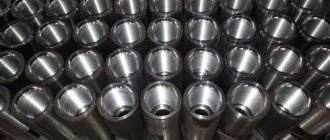All steel pipe manufacturers set themselves the primary task of effectively protecting pipe materials from the destructive effects of corrosion.
At the moment, from the point of view of economic benefits, the most promising and long-lasting method is the option made of extruded polyethylene, which has acquired the name highly reinforced insulation of steel pipes.
This type of coating for steel pipes has proven itself so well that in a short time it quickly became the leader in popularity among building materials.
Products with this type of coating are suitable for use in the following areas:
- In an underground pipeline transporting gas at a pressure of no more than 5.5 MPa.
- They can also be installed in a network transporting oil and water.
- Transportation of sewage waste.
Product options with highly reinforced coatings are distinguished by high-quality anti-corrosion protection and meet all modern regulatory criteria.
Very enhanced processing of steel pipelines in terms of reliability is an order of magnitude higher than other similar materials.
Polyethylene is applied to a solid base to improve the adhesion of the heat-insulating material to the pipe, and this reduces the susceptibility of the product to external mechanical damage, reduces the volume of absorbed water and increases water resistance.
This line of products is characterized by a long service life, it lasts 30 years or more. During this period, the mainline does not require repairs or replacement of pipes.
The temperature of the distilled medium for such products ranges from -40 to +80 degrees. Working pressure is from 2.5 to 5.5 MPa. These pipes can be protected from the effects of very low temperatures using insulation.
Scope of application and installation features
Shells made of galvanized steel have high performance characteristics and an affordable price, therefore they are widely used in:
- hot and cold water supply systems
- sewer lines;
- pipelines of the oil and gas industry;
- thermal routes laid underground, in trenches, and above ground;
- ventilation systems;
- arrangement of stoves, fireplaces (chimney insulation);
- fire-fighting water supply systems;
- systems of supply and discharge pipelines with circulating process fluid;
- to protect open working parts of machines and mechanisms.
The process of installing a galvanized shell is quite simple, does not require the use of special technological equipment and can be easily done with your own hands.
Non-professionals can use the following step-by-step instructions for isolating a separate section in an already operating highway:
- clean the surface of the required section of the pipeline from dirt;
- degrease it with white alcohol or solvent;
- apply an anti-corrosion coating of bitumen primer to the surface of the working pipes;
- remove wetted parts of polyurethane foam insulation at the ends of adjacent pipe sections;
- heat the protective shell at the joint to a temperature of about 80°C - a special adhesive tape (bitumen-rubber MBR) is placed in this place;
- fix the protective galvanized shell at the joint, securing the product with special clamps or cuffs;
- drill several holes for pouring polyurethane foam;
- mix the foaming agent and pour it into the prepared holes;
- Seal the holes with Abris sealing tape.
In rainy weather, work should be done under a canopy or other type of shelter, otherwise moisture may penetrate in the form of condensation or precipitation into the inner layer of insulation.
Very reinforced waterproofing of pipelines from the manufacturer
Very enhanced waterproofing of pipes.
Only specialists and experts in their field can perform high-quality work.
The direction of waterproofing work on a gas pipeline requires certain skills in the work of specialists in the gas industry and the field of construction and operation of pipeline transport.
Very reinforced pipe insulation.
Go to the section of insulating materials for steel pipelines or to the section of pre-insulated steel pipes in VUS insulation.
Let's consider the types of insulation for pipes.
Pipe insulation is divided into:
thermal insulation waterproofing
Waterproofing is our specialty. Therefore, we will focus on it. There are three types of waterproofing for pipes:
- conventional insulation (type A according to DSTU 4219:2003 and GOST 9.602)
- reinforced insulation (type B according to DSTU 4219:2003 and GOST 9.602)
- very reinforced insulation (type B according to DSTU 4219:2003 and GOST 9.602)
All technical aspects are specified in the regulatory documentation and you can familiarize yourself with their list in our documentation section. We will pay special attention to the type of highly reinforced insulation for gas and oil pipelines. Intape bitumen-polymer tape for pipes is produced with a thickness of 1.8 mm. and applied in 2 layers
This way we get very enhanced insulation with a total insulation layer of 3.6 mm.
The lower the quality of bitumen-polymer tapes and materials, the thicker the layer of mastic applied to the surface of the pipe should be. Bitumen-polymer tapes are applied in 2 or 3 layers with a total thickness of the insulating coating of 4.6 mm. This will be very enhanced waterproofing.
Pipe insulation with bitumen mastic
- can be used for a very reinforced type. A multi-layer application of mastic is required, alternating reinforcing materials and wrapping tape in the outer layer. This layer should be from 7 to 9 mm. What to insulate and by what method is up to you as a technologist and designer!
|
General information about the material
The quality of the coating has high protective properties, so insulation takes first place among other types of material.
The material is used to perform insulation work in the following areas:
1.in the gas industry, to insulate underground pipelines having an operating pressure not exceeding five and a half milliamps.
2.oil industry and water supply area.
3.used for laying sewers.
Attention! The method of highly enhanced insulation serves as increased protection against corrosive deposits, the material is manufactured in accordance with all state standards, and also has higher reliability in comparison with similar analogues.
Bare rolled pipes are placed in specialized polyethylene material to improve the adhesive properties of the insulation in relation to the pipe surface. The procedure creates protective functions of pipes from the influence of mechanical type and water.
The wear resistance of the coating exceeds 30 years, which is exactly the period of time that pipeline networks do not require repairs and replacement of products.
The liquid distilled through pipes can have a temperature of minus forty degrees, a maximum of eighty degrees above zero, the optimal pressure is from two and a half to five and a half milliamps.
Methods used by VUS. The modernized material solves the problem of corrosion, which is always acute during the installation of pipeline systems. Steel is constantly exposed to air and water, which negatively affect the quality of the coating. Underground communications are affected by groundwater, which differs in its content of aggressive substances.
The main VUS methods include:
1.bitumen or bitumen-rubber mastics are common options for pipe processing. Reinforcing and protective material is placed on top of the mastic. Anti-corrosion insulation is applied in two layers to pipeline products, equal to 3 millimeters, with another layer of kraft paper.
2. This method involves applying mastic in four layers. A rolled reinforcing layer is laid between the second and third levels of coating. The protective material is based on kraft paper.
3. The third method involves applying a larger reinforced coating, which has 6 layers with two layers of reinforcement. Layers for protection are laid at 9 millimeters.
Bitumen VUS
Very reinforced bitumen insulation is used as waterproofing and a way to prevent corrosion on steel pipe lines in non-channel types of laying water supply lines and industrial pipelines.
The main area of use of existing coatings is the prevention of corrosive formations in a network of small-diameter pipes that operate at normal temperatures.
The multilayer structure of bitumen-mastic treatment consists of:
- primer on the surface of the pipes;
- the first layer is reinforced fiberglass;
- the second layer consists of bitumen mastic, which consists of hydrophobic materials;
- the next reinforcing layer consists of fiberglass;
- a pair or a single layer of coating consisting of kraft paper.
Video
Very reinforced bitumen-polymer insulation has the following advantages:
- Easy to apply.
- Great level of durability.
- Resistance to mechanical damage.
- Resistant to cathodic disbondment.
- Excellent adhesion characteristics to steel parts.
- Minimum oxygen and water permeability.
- Resistance to corrosion formations.
- Tolerance to temperature changes.
Production of pipes with bitumen-mastic insulation
*
Preparation for applying protection is no different from polyethylene. But the superimposed layers themselves have a different composition:
- primer;
- 1st layer of bitumen mastic;
- 1st reinforcing layer;
- 2nd layer of bitumen mastic;
- 2nd reinforcing layer;
- outer covering or puff wrap.
To achieve the VUS, the number of reinforcing, mastic layers is increased, but this leads to an increase in the mass of the product. Bitumen-rubber, polymer-bitumen films, and other mastics made from hydrophobic materials with various types of additives are used as bitumen-mastic materials. For reinforcement, fiberglass or any non-woven fabric is used. The total insulation thickness can reach 10 mm.
Highway
VUS pipes are manufactured industrially, their reliability is ensured by GOST requirements and confirmed by a certificate. They comply with all modern standards that apply to pipelines operating in adverse external conditions.
Technical and operational characteristics
PPU can be hard or soft. Soft polyurethane foam - foam rubber - does not have much strength, but it is flexible and soft. Its scope of application is therefore limited mainly to domestic use: furniture, toys, clothing, bending machines, etc.
Polyurethane foam has good adhesion to almost any material; after applying and hardening the foam, it adheres very firmly to the base, regardless of whether it is plastic, concrete, brick, metal, glass, wood, OSB or any other material. When treating the surface with liquid polyurethane foam, no additional fasteners are needed.
Insulating polyurethane foam takes any shape and perfectly fills volumes of any complexity - that’s why they like to use it in hard-to-reach places. Treatment of surfaces with foam creates a continuous light and warm layer of insulation without cracks, joints or cold bridges from fasteners.
Polyurethane foam can be used in the temperature range from -200 to +200°C.
The lightweight foam material is easy to transport and install, it adds very little weight to structures, and can work in the ground and in wet conditions. In industrial applications, it is brought to the construction site in the form of two components.
In addition, solid polyurethane foam does not absorb or conduct water and serves as an excellent waterproofing agent; it is resistant to rotting and inert to most acids, alkalis and salts.
Polyurethane foam is a low-flammable, low-combustible and self-extinguishing material.
The only serious drawback of polyurethane foam as insulation is its instability to ultraviolet radiation. Therefore, when used in open sunlight, the insulation layer should be covered with a casing or plaster/putty and paint, or opaque materials.
Thickness of galvanized insulation
Pipe-rolling materials with galvanized protection are manufactured in accordance with GOST 30732-2006. They are of high quality and can significantly reduce heat losses.
Video
The amount of thermal insulation is also carried out in accordance with standard standards. She may be:
- standard;
- reinforced.
The required dimensions of the coating are determined based on the technical specifications, taking into account internal and external factors.
The table provided shows how much galvanized insulation is overlapped on a steel pipe.
| External volume of pipe (cm) | Wall thickness (cm) | Nominal value of galvanized protection volume | Minimum dimensions of galvanization (cm) |
| 3,2 | 0,3 | 100; 125; 140 | 0,055 |
| 3,8 | 0,3 | 125;140 | 0,055 |
| 4,5 | 0,3 | 125; 140 | 0,055 |
| 5,7 | 0,3 | 140 | 0,055 |
| 7,6 | 0,3 | 160 | 0,055 |
| 8,9 | 0,4 | 180 | 0,06 |
| 10,8 | 0,4 | 200 | 0,06 |
| 13,3 | 0,4 | 225 | 0,06 |
| 15,9 | 0,45 | 250 | 0,07 |
| 21,9 | 0,6 | 315 | 0,07 |
| 27,3 | 0,7 | 400 | 0,08 |
| 32.5 | 0,7 | 450 | 0,08 |
| 42.6 | 0,7 | 560 | 0,1 |
| 53 | 0,7 | 675; 710 | 0,1 |
| 63 | 0,8 | 775; 800 | 0,1 |
| 72 | 0,8 | 875; 900 | 0,1 |
| 82 | 0,9 | 975; 1000 | 0,1 |
| 92 | 1 | 1075; 1100 | 0,1 |
| 102 | 1,1 | 1175; 1200 | 0,1 |
| 122 | 1,1 | 1375; 1400 | 0,1 |
| 142 | 1,2 | 1575; 1600 | 0,1 |
The standard dimensions and size of the shell, which is provided in the table, are carried out in strict accordance with the standard. It is also possible to produce spiral-wound external protection with a larger wall size.
The length of the pipe, which is the shell, can be arbitrary. It depends on the measured length of the steel assortment. Taking into account areas without protection, this is from 150 to 210 mm.
This shell is manufactured according to GOST 14918-80 standards from steel strips in rolls. During production, equipment with high productivity is used. It guarantees a high level of precision when cutting workpieces and strong external and internal fastening seams during rolling.
When cutting steel sheets and shaped parts, plasma cutting machines are used. These units are equipped with self-diagnostic systems, which allows cutting with an accuracy of 0.05 cm.
When producing rolled pipe products with galvanized insulation, small areas are left unprotected on both sides of the workpieces. They are needed to hold the parts together.
After fastening the pipe materials, areas without insulation must be insulated. For this purpose, specially designed kits are used.
Video
The dimensions of galvanized steel pipes also vary. Their diameter varies from 14 to 137.5 cm. Experts highlight them because of their safety, because they will not emit substances that can be harmful to health.
How polyethylene insulated pipes are produced
The whole process is mechanized. It consists of several stages:
- Surface preparation. At this stage, the heated pipe passes through a shot blasting machine and is cleaned of rust. In this case, the shot creates a rough surface. The stage of dust removal and cleaning of shot residues goes through.
- Control of surface preparation. Cleanliness is checked using adhesive tape and a reference sample, roughness is checked using a special device. These indicators determine the level of adhesion.
- Application of an anti-corrosion layer. The pipeline is heated with gas, the chromium alloy is removed from it, and the temperature is raised to 200 0C using induction heating. In this state, the epoxy primer is applied. The thickness of the primer layer is up to 0.08 mm.
- Application of adhesive material. A hot-melt polymer composite with a thickness of at least 0.3 mm is used as an adhesive.
- Formation of a protective layer. The pipe is insulated using polyethylene-based materials. A tape base can be used.
Production
After this, the product is cooled and dried. Next, the pipes are prepared for operation: up to 15 cm of insulation is removed from their ends and a chamfer is formed.
Quality guarantee, low factory prices
The cost of pipe insulation in our company is one of the lowest in the region and throughout Russia. Specific prices for pipeline insulation are determined by a number of factors, including:
- pipe diameter;
- coating option - external, internal;
- materials used;
- volume of work performed;
- order completion times.
We work in the following cities: Chelyabinsk, Nizhny Novgorod, Perm, Ekaterinburg, Omsk, Samara, Ufa, Kazan, Krasnoyarsk, Volgograd. You can get a price list for pipe insulation services by contacting our managers by email or calling:
- +7
- +7
VUS pipe insulation – advantages and features of coating application + Video
VUS insulation is insulation of steel pipelines reinforced with several layers; these layers protect pipe products from mechanical damage and rust.
1 When are pipes with reinforced insulation used?
Today, modern pipelines are subject to strict requirements in terms of their protection from two types of corrosion manifestations - stray currents and soil corrosion. According to recent studies, the most effective set of insulating characteristics is demonstrated by a steel pipe coated with material made from extruded polyethylene.
Extruded polyethylene coated steel pipe
We recommend that you read
This coating is optimal for pipes used in the construction of the following systems:
- sewer and water supply networks;
- linear sections of main-type gas pipelines in which the pressure value does not exceed 5.5 MPa;
- underground pipelines of different purposes;
- gas distribution complexes operating at a load of no more than 2.5 MPa;
- oil pipelines.
Oil pipeline with protective coating
VUS insulation can be used to install all of these networks operating at temperatures from +80 to -40 °C in almost any environment of aggressiveness. Nowadays, pipes with an extruded protective coating are actively used in the laying of utility systems, city water and gas pipelines.
2 Features of applying enhanced protective coating
Products with the insulation we describe comply with the requirements of two State Standards - 9.602 and R 51164. Pipe coating is carried out in several stages at factories. First, a sublayer is applied to the pipe surface (outside), which performs an adhesive function. It is needed to ensure that the metal adheres efficiently and reliably to the polyethylene coating.
Pipes with VUS coating
Then a film of extruded material is mounted. It has a thickness of 2–3.5 millimeters. If necessary, a third layer is applied, which, like the first sublayer, is made of durable polyethylene. VUS protection of pipes, compared to the use of polymer tapes or standard bitumen insulation, provides a much higher quality coating. Such three-layer insulation makes it possible to increase the time of trouble-free operation of pipelines to 30, and sometimes more, years.
Installation of film of extruded material
Let us add that pipe coating is carried out using flat-slit (often called lateral) extrusion technology. To increase the adhesive properties of pipe products, the following is additionally used:
- shot blasting high-quality surface cleaning;
- processing of steel with a special composition (adhesive-active) called Sevilen, its thickness is approximately 350 microns.
3 What are the main advantages of a steel pipe coated with VUS?
The main advantage of pipes with reinforced insulation is their durability. A steel pipe with VUS protection and systems built from it do not require regular maintenance. Accidents on such pipelines are completely excluded if installation work is carried out correctly. Reinforced insulation guarantees:
- increased resistance of systems to mechanical damage;
- low level of water permeability and water absorption;
- excellent adhesion of the protective coating to the surface of the pipeline.
Steel pipe with protection
Do not forget that a pipe with VUS protection is not afraid of high and low ambient temperatures, as well as aggressive compounds that may be present in the air, working environment or soil where the pipeline is laid.
VUS insulation
Another important point is that the total thickness of the three-layer reinforced coating is not at all large. Today, highly reinforced coating is the most effective method of anti-corrosion protection of pipelines for various purposes. It is used in all developed countries of the world.
Very reinforced waterproofing of pipelines from the manufacturer
Very enhanced waterproofing of pipes.
Only specialists and experts in their field can perform high-quality work.
The direction of waterproofing work on a gas pipeline requires certain skills in the work of specialists in the gas industry and the field of construction and operation of pipeline transport.
Very reinforced pipe insulation.
Go to the section of insulating materials for steel pipelines or to the section of pre-insulated steel pipes in VUS insulation.
Let's consider the types of insulation for pipes.
Pipe insulation is divided into:
thermal insulation waterproofing
Waterproofing is our specialty. Therefore, we will focus on it. There are three types of waterproofing for pipes:
- conventional insulation (type A according to DSTU 4219:2003 and GOST 9.602)
- reinforced insulation (type B according to DSTU 4219:2003 and GOST 9.602)
- very reinforced insulation (type B according to DSTU 4219:2003 and GOST 9.602)
All technical aspects are specified in the regulatory documentation and you can familiarize yourself with their list in our documentation section. We will pay special attention to the type of highly reinforced insulation for gas and oil pipelines. Intape bitumen-polymer tape for pipes is produced with a thickness of 1.8 mm. and applied in 2 layers
This way we get very enhanced insulation with a total insulation layer of 3.6 mm.
The lower the quality of bitumen-polymer tapes and materials, the thicker the layer of mastic applied to the surface of the pipe should be. Bitumen-polymer tapes are applied in 2 or 3 layers with a total thickness of the insulating coating of 4.6 mm. This will be very enhanced waterproofing.
Pipe insulation with bitumen mastic
- can be used for a very reinforced type. A multi-layer application of mastic is required, alternating reinforcing materials and wrapping tape in the outer layer. This layer should be from 7 to 9 mm. What to insulate and by what method is up to you as a technologist and designer!
|
You will use certain materials to successfully complete your projects.
Waterproofing of pipes is very reinforced Ukraine.
The article was prepared by specialists from Centrum LLC.
ik-izol.com
What is meant by VUS and US
Any type of insulation means a multi-layer coating structure made of protective materials.
US - reinforced insulation is used in soils with a resistivity from 10 to 20 Ohm*m.
VUS insulation has a meaning - very reinforced, it is necessary where the soil resistivity is less than 10 Ohm*m, which is typical for a highly corrosive environment.
The main difference between these types of insulation is the thickness of the insulating layer.
Types of VUS insulation
Polyurethane foam (PPU) coating
Steel pipe in polyurethane foam insulation is used for laying heating networks in a ductless and above-ground way. PPU insulation is manufactured using the latest technologies and high quality materials.
Polyurethane foam (PPU) is created by pairs of environmentally friendly components. These are Voratec CD 100 and Izolan-345. A distinctive characteristic of this product is its high (97%) thermal insulation properties.
If we consider the advantages of PPU, they are:
- The temperature at which it can be used is from 85 to 135 degrees.
- Long period of use (up to thirty years).
- Thermal insulation properties up to 97 – 98%.
- Reducing the cost of installing heating mains.
- Reduced costs for repair work of the water supply network.
- Possibility of use in different climatic conditions.
- Ease of identifying the emergency area.
And the most important advantage is that polyurethane foam does not have a harmful effect on the environment. This also reduces leakage of the working medium, because additional anti-corrosion protection increases.
The wall thickness of steel pipes and the height of the surface coating made of polyurethane foam at companies selling these products are adjusted in accordance with the wishes of customers.
Video: pipe insulation, comparison of types
Steel pipes in polyurethane foam insulation are used for the construction of various heating mains. Manufacturing standards are determined by GOST 30732-2006.
Let's consider their technical features:
- The density index is not less than 60.
- Compressive strength of at least 0.3.
- Water absorption during one and a half hour boiling is no more than 10.
- At a temperature of +50 degrees, heat conductivity is no more than 0.033.
These options are suitable for the following coolant parameters:
- Working pressure within 1.5 MPa.
- The temperature of the coolant is not higher than 140 degrees.
The main advantages of products with polyurethane foam:
- Long time of use, more than 30 years.
- Reducing heat loss.
- Ability to work at high temperatures.
- Reducing waste on the use of heating networks by 10 times.
VUS GOST 9.602 2005
The development of the field of creating insulation materials does not stand still. Scientists are constantly developing and have made it possible to create new building materials and technologies for applying protection to them.
This significantly extends the life of the products. Thus, pipes with very increased protection appeared.
The highly reinforced insulation according to GOST 9.602 2005 has proven itself very effectively in practice. At this point, such a standard becomes a guarantee of a high-quality product, which, according to the available characteristics, is higher than other similar options.
Modern types of products GOST 9.602 2005 quickly took leading positions among other protections for steel pipes against corrosion. They are characterized by minimal moisture absorption. And they can last for more than fifty years without an accident. High contact resistance creates effective cathodic protection.
This type of material with two- and three-layer finishing is used in various pipelines, and this helps reduce the cost of repairs and work associated with digging out a damaged pipeline.
In addition to insulating pipeline systems, branch reinforcement is also used. The point in this case is that the anti-corrosion coating is placed on the fastening parts of the highways. The volume of these elements should not be more than 53 cm.
